Famous for its annual carnival and caipirinha cocktails, Rio de Janeiro is undeniably fun and fabulous. I spent a week here while backpacking Brazil, as part of my month-long tour of South America. This city is full of stories, parties and more than a hint of danger. It’s a vibrant place, with its famous beaches, imposing Sugarloaf Mountain and colourful Selaron Steps. Not to mention the iconic Christ the Redeemer statue that looks down over this bustling city. So buckle up. This is your essential guide to backpacking Rio de Janeiro. Discover the best Rio de Janeiro itinerary for 5 days, including the top places to stay and things to do. Plus, find out what happened when I tried hang-gliding over the city!
This post may contain affiliate links. That means, if you make a purchase, I may receive a small commission. As an Amazon Associate I earn from qualifying purchases. For more information, read my disclaimer.
These are the best places to stay in Rio de Janeiro
You will find lots of enticing accommodation options on a Rio de Janeiro backpacking trip. The best area to stay in Rio depends on your preferences. Do you want to be close to the coast? Or near the nightlife? Some of the best hostels in Rio can be found near the famous beaches of Ipanema and Copacabana. The lively bohemian neighbourhoods of Lapa and Santa Teresa are other examples of Rio de Janeiro’s best places to stay.
Ipanema
When I first arrived in Rio de Janeiro, I stayed in Ipanema, a couple of blocks from the beach. I loved this area.
The best beach backpackers hostels in Rio’s Ipanema neighbourhood include the boutique-style Ipanema Beach House which an outdoor swimming pool. Alternatively, the Mango Tree Ipanema has a beautiful garden and terrace.
Copacabana
Many of the best hostels in Rio de Janeiro are in the popular Copacabana neighbourhood.
Beach-loving backpackers in Rio de Janeiro will love the excellent Chez Zany Boutique Hostel – Copacabana. It’s just a few minutes’ walk away from the sand. The Social Hostel is a good option if you want to be in among the lively restaurants and bars.
Santa Teresa
In the pretty Santa Teresa neighbourhood, you will find some of the beautiful Rio backpackers hostels among its green hills. It’s cool to wander around the steep cobbled streets of this artistic area and hang out in its cafes. However, after dark it is considered one of the more dangerous places to be in Rio. That said, I stayed in this area for a few days and I really liked its bohemian vibe.
Top Rio hostels here include the fabulous Castelo dos Tucanos Hostel. It’s a literal castle, has a pool and serves a delicious breakfast. Also with a pool is the Rio Forest Hostel, popular for its panoramic views over the city.
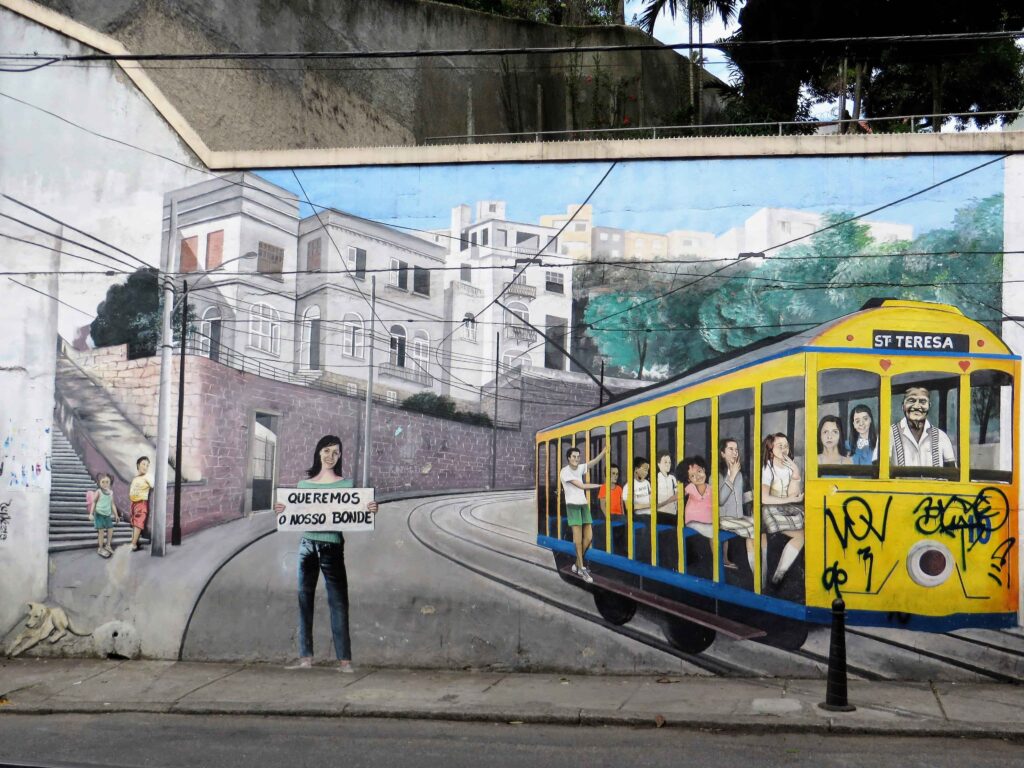
Lapa
Lapa is a popular place to stay for people backpacking Rio de Janeiro. It has a fantastic nightlife and non-stop samba parties.
The area’s best backpacker hostels include the excellent Books Hostel. It is a lot of fun, thanks to its charismatic host and on-site bar. The nearby Lapa Casa Hostel is also in a great location close to the area’s famous aquaduct, Selaron Steps and street parties.
Check out all the best hostels in Rio de Janeiro here.
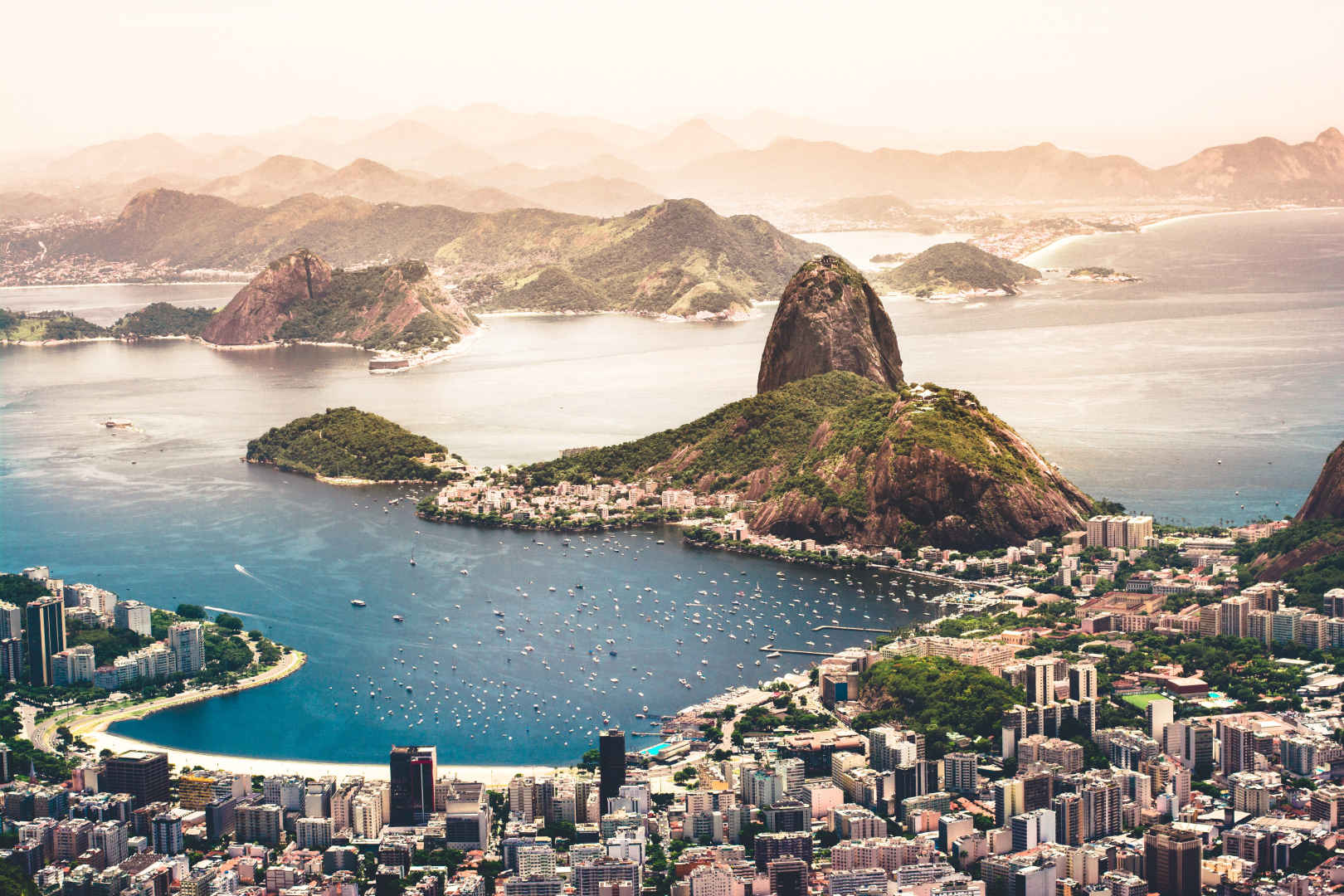
This is the best Rio de Janeiro itinerary for 5 days
If you’re wondering what to do in Rio de Janeiro, you’re in for a treat. Visitors are spoiled for choice here, as there are plenty of fun Rio de Janeiro attractions and activities.
Day 1: Guided tour and Lapa district
One of the best things to do in Rio de Janeiro on your first day is take a tour of the city. This will help you get your bearings.
Morning: go on a guided tour of Rio de Janeiro
A local tour guide will show you what to see in Rio and share tales of the city’s fascinating history.
Try this half day guided tour in the morning, which picks you up in a comfortable air-conditioned bus. It takes you directly to several of Rio de Janeiro’s top highlights over the course of a morning. By lunchtime, you will be able to cross off your list many of the coolest things to see in Rio.
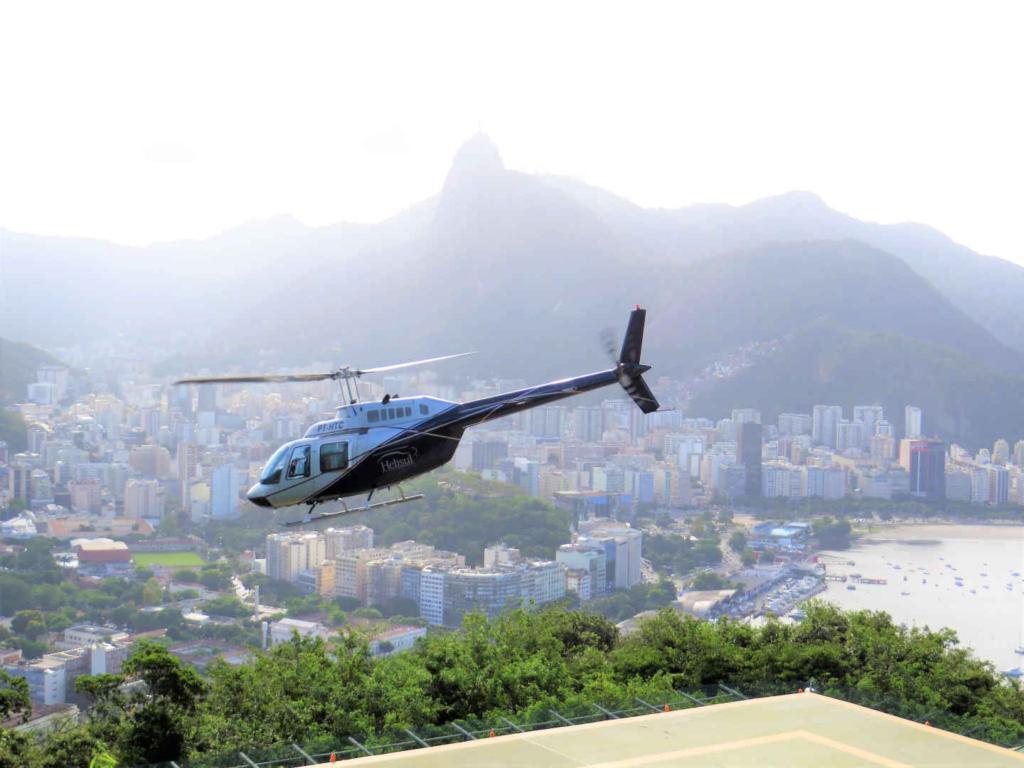
Early afternoon: visit the Metropolitan Cathedral
One of the most impressive things to see in Rio de Janeiro is the Metropolitan Cathedral of Saint Sebastian. Named after the patron saint of Rio de Janeiro, this cathedral was constructed from 1964 to 1979. It’s designed to resemble a modern version of the Mayan pyramids.
Located in the city centre, it is a 75-metre (246 ft) cone. Its 8,000 square metre interior that holds up to 20,000 people. Inside, it is just as impressive. The cathedral has four enormous stained glass windows which are 64 metres (210 ft) from floor to ceiling.
Reserve your spot on a guided tour of Rio de Janeiro that includes a visit to the Metropolitan Cathedral.

Late afternoon: Walk up the colourful Selaron Steps
Anyone wondering what to see in Rio de Janeiro would be mad to miss the colourful Escadaria Selarón. Also known as the Selaron Steps, they sit between the neighbourhoods of Lapa and Santa Teresa.
It’s the work of Chilean-born artist Jorge Selarón. He decorated the 125-metre staircase with tiles in the colours of the Brazilian flag, as a tribute to Brazil’s people.
The story goes that Selarón’s house in Rio faced a set of dilapidated grey steps. So, he decided to take it upon himself to make them more beautiful. He started affixing tiles to them that he had collected from his travels. Every day he could be found pasting and polishing the tiles on one of these 215 steps. Soon, his friends and neighbours started to collect and donate tiles for his project. Selarón sold his artworks in order to fund its upkeep. With no city funding, he created one of Rio’s most popular tourist attractions totally by himself.
A gregarious fellow with a distinctive handlebar moustache, Selarón would sit on the steps every day and chat with passersby. He’d say the steps were his lifetime’s passion and he would only stop working on them once he was dead.
Sadly, in early 2013, Selarón was found laying lifeless on his steps. The police ruled it an unexplained death or possibly suicide. However, locals believe Selarón was murdered by a business partner’s mafia associates. The Selaron Steps remain his legacy and one of Rio de Janeiro’s most distinctive landmarks.
Book your place on this half day tour of Rio, which takes you to the magnificent Selaron Steps.
Evening: enjoy the lively nightlife in Lapa
Rio’s central Lapa neighbourhood is famous for its vibrant nightlife. A visit here is one of the best things to do in Rio de Janeiro at night. In Lapa there are also two 18th century attractions. The first is an impressive aqueduct called the Arcos da Lapa. There’s also Rio’s first public park, the Passeio Público.
Lapa has been known for its lively cultural scene since the early 1950s. At this time, Brazilian artists and intellectuals would meet in its restaurants and bars. Today, there are still many venues where you can drink caipirinha cocktails or dance to live Brazilian samba music.
If you decide to come here in the evening, locals advise not to carry a bag or phone. Only take a small amount of cash, to avoid being a target for thieves. If you are backpacking Rio de Janeiro alone, you might feel safer on an organised Lapa pub crawl.
Day 2: Christ the Redeemer and Santa Teresa
Morning: See the Christ the Redeemer statue
If you’re backpacking Rio de Janeiro, you will no doubt want to visit its iconic Christ the Redeemer statue. It’s best to go in the morning to avoid the crowds. You can take the train up Corcovado mountain.
This captivating statue is the world’s largest Art Deco sculpture and one of the New Seven Wonders of the World.
At 38 metres (125 ft) tall, it looks down over Rio from the top of Corcovado (“hunchback” in Portuguese) mountain. This is a 710-metre (2,329 ft) granite peak located in the tropical rainforest of Tijuca Forest national park. This means it can be easily spotted from great distances across the city.
To truly appreciate the scale of this monument, you need to climb the mountain and stand at his feet. Luckily, there is transport available to take you up to the peak.
Book your train ticket to see the Christ the Redeemer statue at the peak of the Corcovado mountain.
Afternoon: Ride one of Rio de Janeiro’s traditional yellow trams
In Rio de Janeiro, things to do include taking a tram ride around the city. Rio’s traditional, bright yellow trams are a much-loved local icon.
On this guided tour, you can catch the tram from central Rio de Janeiro. It travels over the Arcos da Lapa aqueduct to the bohemian neighbourhood of Santa Teresa.
Here, you can walk along the tree-lined cobblestone streets, winding through the hills of Santa Teresa. You can’t help but soak up the artistic atmosphere. Stops include Ruins Park, where you’ll find an art gallery built around the ruins of a mansion. There are also the famous Selaron Steps, Lapa and some of Rio’s most important cultural venues.
Evening: Enjoy dinner in Santa Teresa
Dine in one of the area’s bohemian restaurants. Make sure you return before dark for safety.
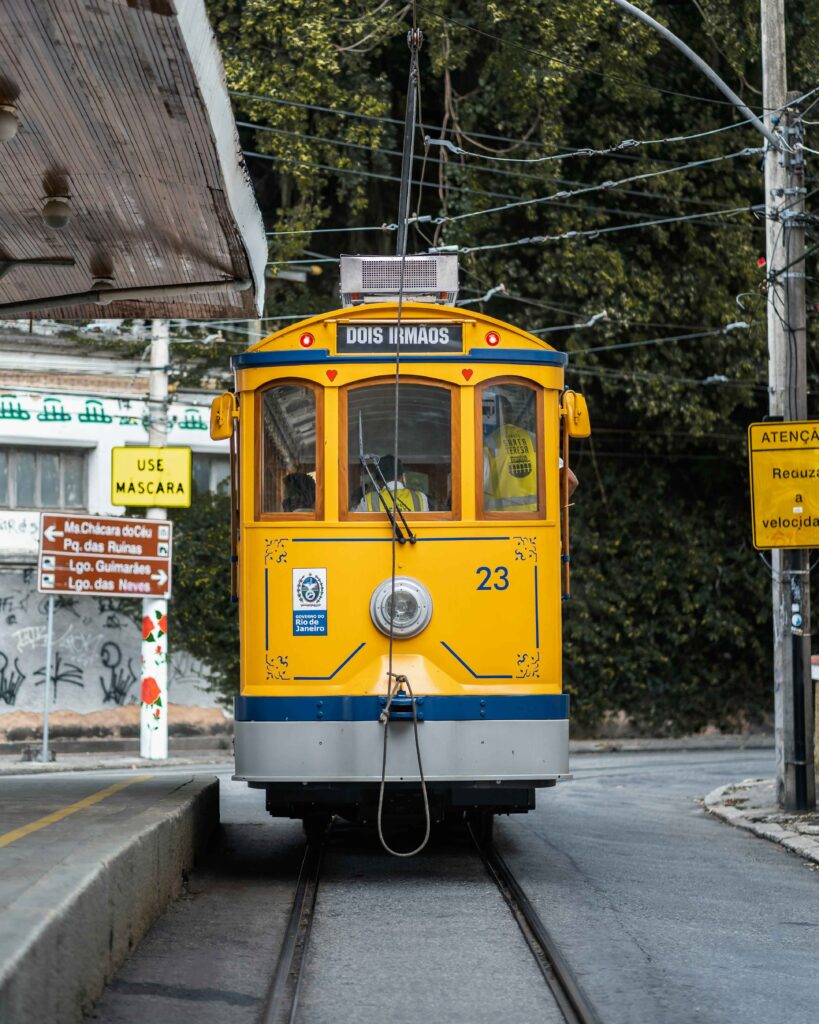
Day 3: Beach day
Morning: Sunbathe and people-watch on Ipanema beach
Top of the list of cheap things to do in Rio de Janeiro is visiting one of its famous beaches. However, a word of warning: don’t take any valuables or cash, as theft is rife on Rio’s beaches.
Ipanema is one of the prettier and quieter beaches. Here, you can people-watch to your heart’s content. Check out the parade of bronzed, toned sunbathers and chatty beach vendors. It’s an inspiring place to be. Lay back and take in the view of the sea, the mountains and the sky. In the sky, buzzing helicopters and birds of prey circle overhead.
This famous Rio de Janeiro beach inspired the Grammy award-winning bossa nova song of the 1960s, The Girl from Ipanema. You can even enjoy lunch at the historic Restaurante Garota de Ipanema, where this song was said to be written.
Book your spot on this sunset bike tour with a local to discover Ipanema and more beautiful beaches in Rio.
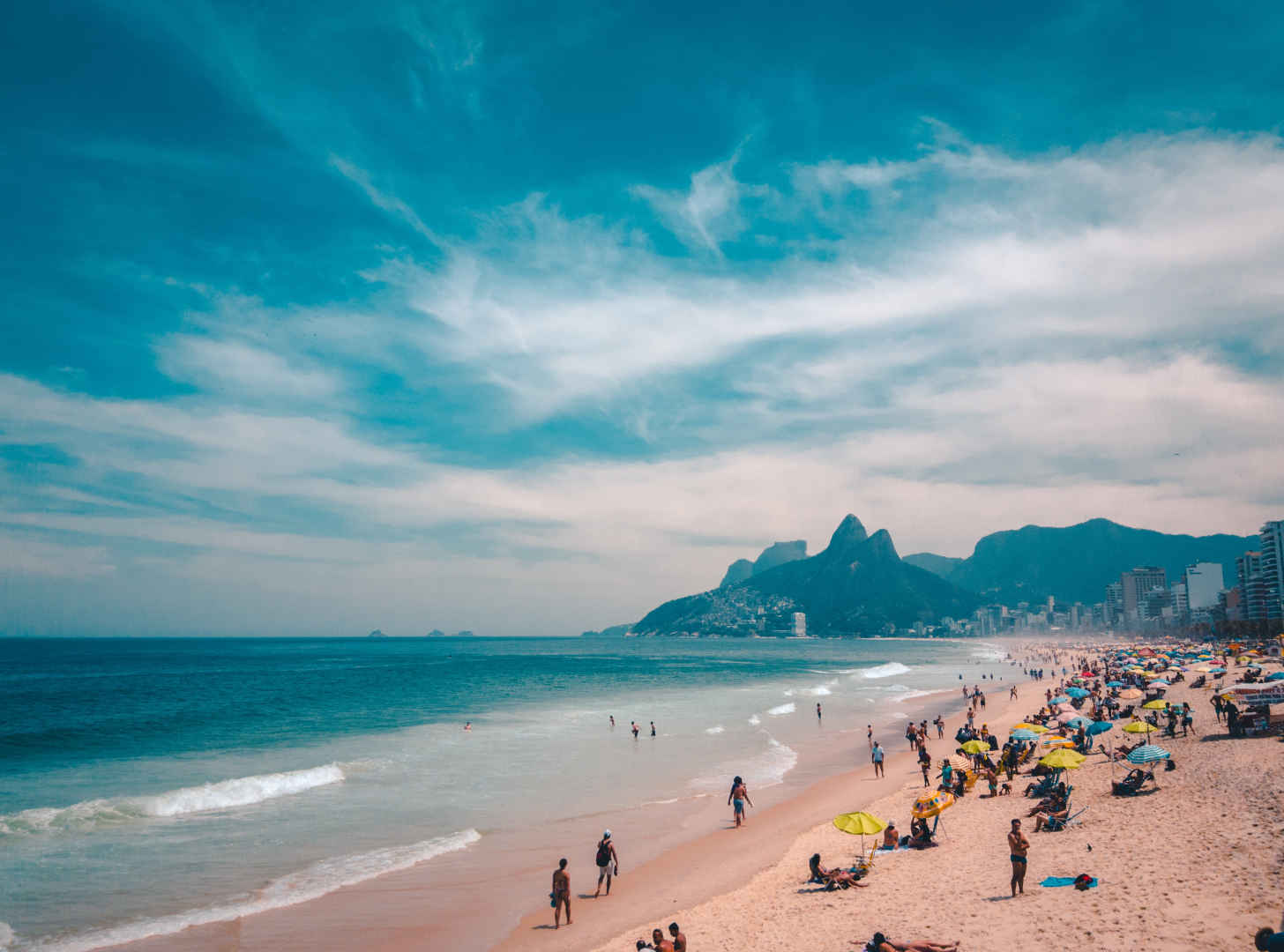
Afternoon to evening: Sip caipirinha cocktails in Copacabana
Another world famous beach in Rio that inspired a popular song – this time by Barry Manilow – is in Copacabana. This is one of Rio’s liveliest neighbourhoods.
This crescent-shaped beach runs from Princesa Isabel Avenue until the lifeguard watchtower number Six. After this, there are two small surfer beaches, then the coastline becomes Ipanema. As mentioned before, keep an eye on your belongings while you’re on the beach.
Things to do in Copacabana include eating, drinking caipirinha cocktails until sunset and enjoying the music at one of its many venues.
Check out this hiking and beach tour to one of Rio’s most stunning viewpoints and discover even more beaches.
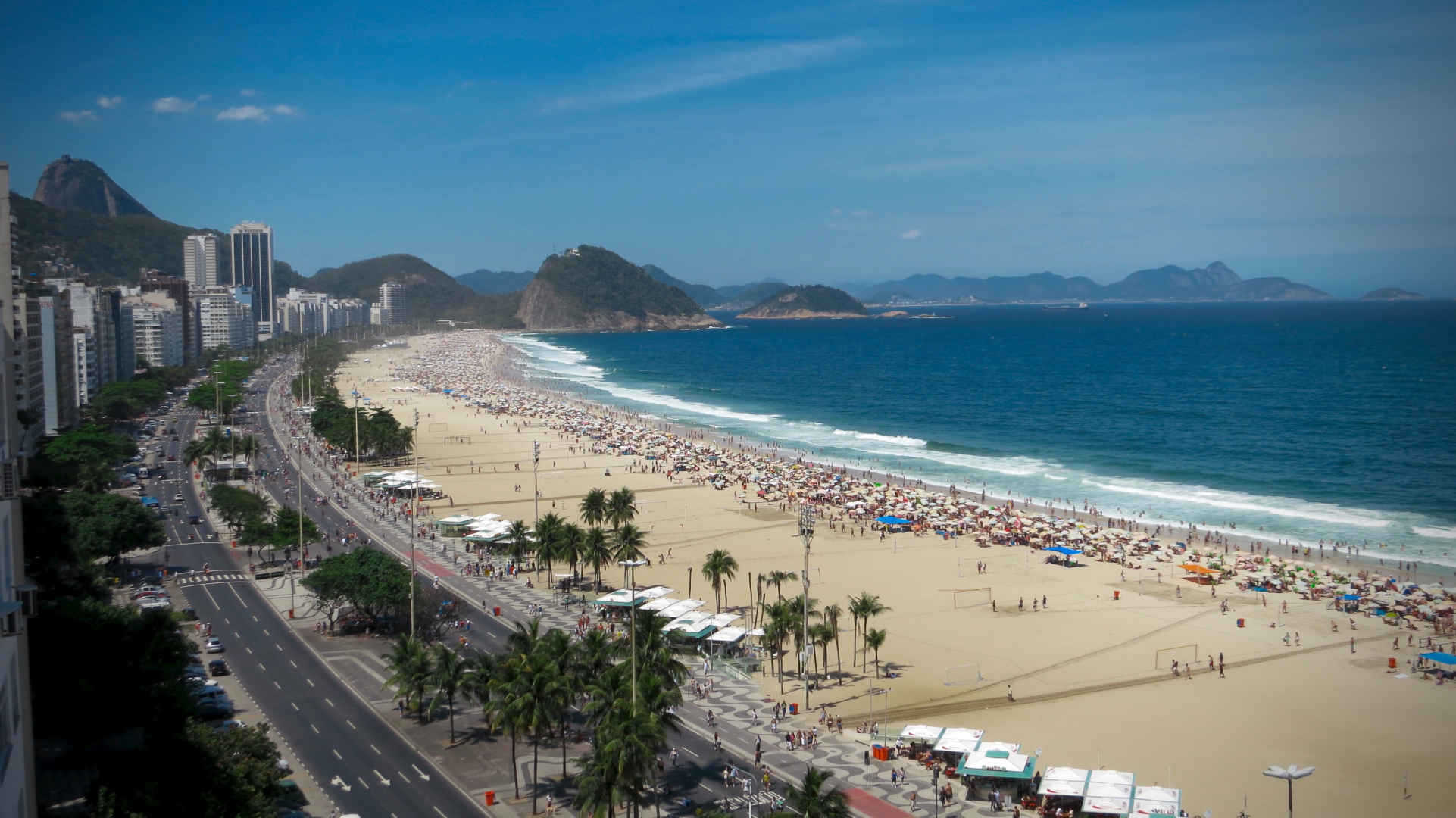
Day 4: Ride the cable car up to Sugarloaf Mountain
Riding the cable car up Sugarloaf Mountain is also one of the top things to do in Rio de Janeiro. This is an excellent way to enjoy panoramic views over the city and beyond.
This renowned Rio de Janeiro mountain of granite and quartz strikingly rises 396 metres (1,299 ft) above Guanabara Bay. Its name comes from its resemblance to the cone-shaped blocks of refined sugar. These were one of Brazil’s most recognisable exports from the 17th to the 19th centuries. The mountain is now a UNESCO World Heritage Site.
Enjoy the sights from the cable car, then take your time with a cocktail at a bar on the summit at sunset. Here, you can appreciate the incredible 360-degree views.
Reserve your cable car ticket online in advance with this popular guided tour.
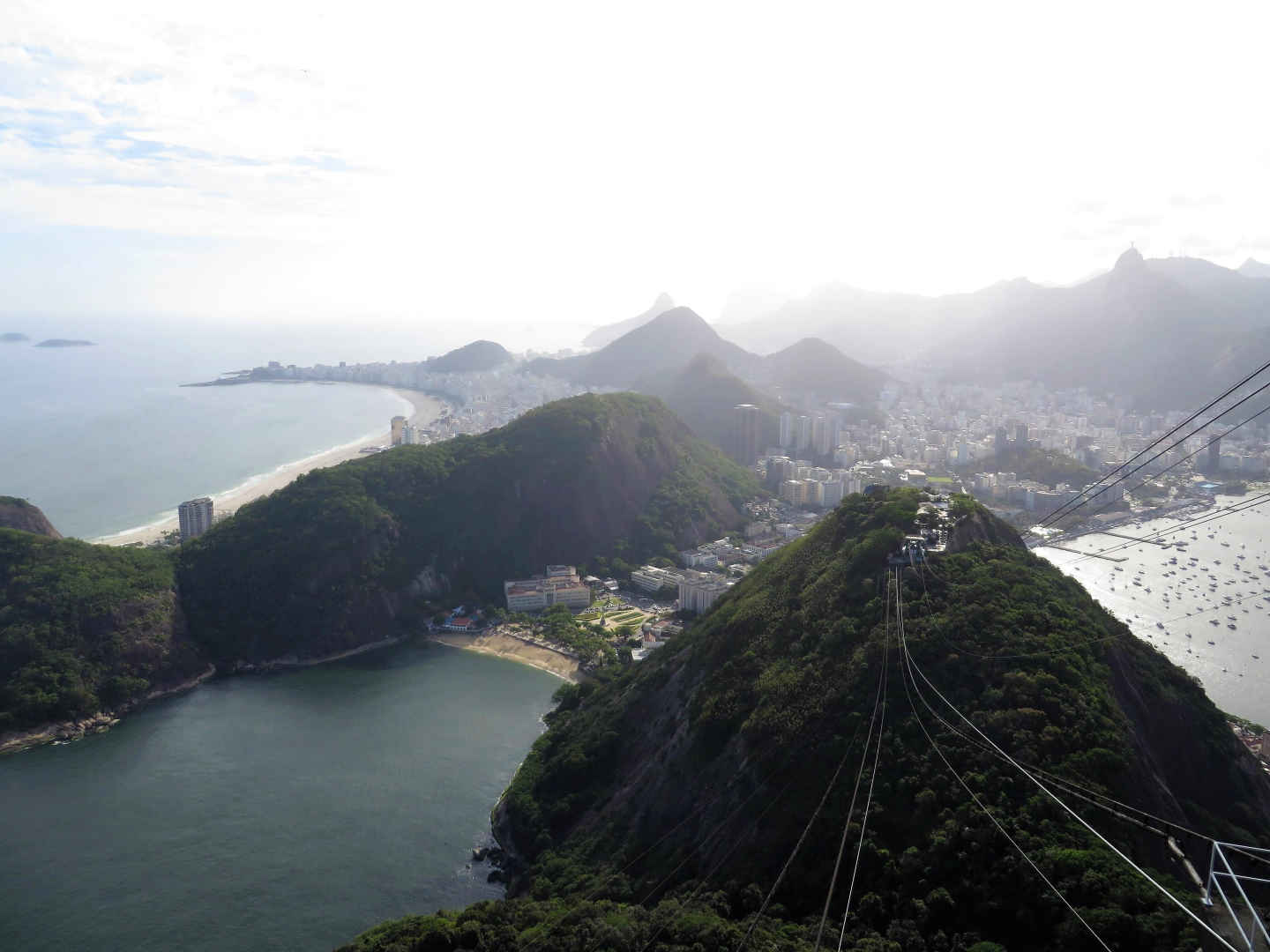
Day 5: Go hang-gliding over Rio
One of the most thrilling activities in Rio de Janeiro is to go hang-gliding over the city. It’s an incredible way to see this epic city from a different perspective as you soar through the sky. What a way to conclude your 5 day Rio de Janeiro itinerary.
Rio’s upmarket São Conrado neighbourhood is the city’s hang-gliding hotspot. With a group of other backpackers from my Rio de Janeiro hostel, I headed to Pedra Bonita. This is the main hang-gliding take-off point, in nearby Tijuca National Park. We were nervous but excited.
Book your Rio de Janeiro hang-gliding tandem flight to see the city from a bird’s-eye view.
We were each assigned a tandem pilot. Clinging on, I ran as fast as my legs would carry me. Off the wooden platform and the mountainside, and into thin air.
I don’t like heights, so it was scary, but an amazing experience. Once airborne, the hang-glider caught a wind current. We soared like a bird, swooping gently over São Conrado’s decadent hotels and pools and sculptured greenery.
By contrast, looking far left we could see Rio’s most populous favela. Here, 100,000 people live crammed into tightly packed homes on the hillside (guided favela tours are popular with tourists). Far beyond that, we could make out the statue of Christ the Redeemer perched atop his hill. Finally, we landed safely on São Conrado’s Praia do Pepino beach.
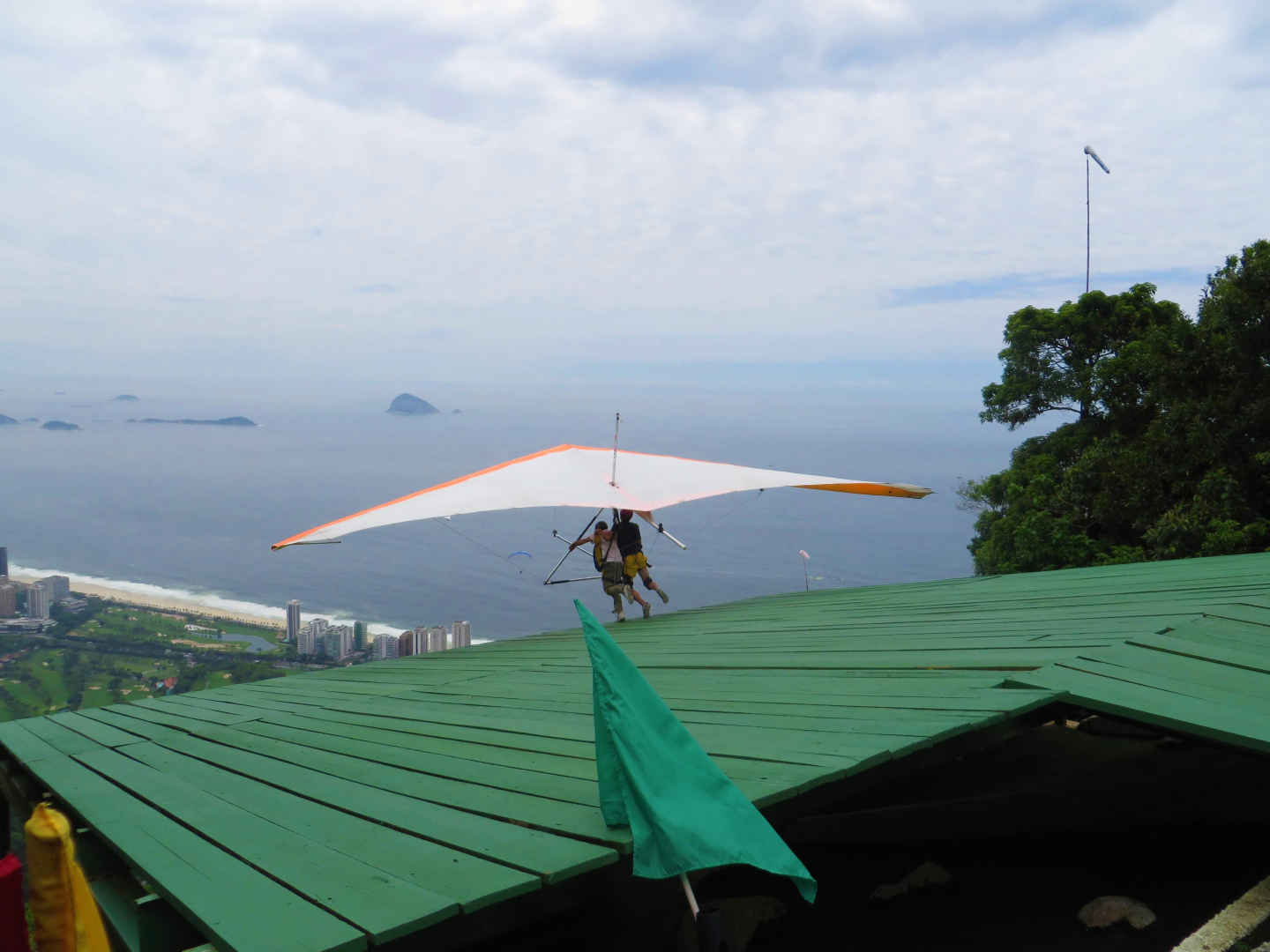
When is the best time to go to Rio de Janeiro?
If you are coming to Brazil to party, you may be wondering when is carnival in Rio? The world famous Rio de Janeiro carnival takes over the city every February.
In terms of weather, Rio de Janeiro has a warm and humid tropical climate. February is the hottest month in the city, with an average temperature of 27°C (81°F). December is often the wettest month of the year. The peak tourist season in Rio runs from December to March. However, some people may find this time of year too hot.
Therefore, the best time to visit Rio de Janeiro for your 5 day itinerary is in the transitional months of November (like I did) or April.
Getting to Rio de Janeiro
International flights to Rio de Janeiro land at its Antonio Carlos Jobim/Galeão International Airport (GIG). The city has a second airport for domestic flights, the RJ Santos Dumont airport (SDU).
To avoid the taxi queues or the hassle of public transport, you can book a private or shared airport transfer to Rio de Janeiro.
If you are travelling overland, you are most likely to arrive by bus. There are long-distance bus services all over Brazil, such as from the country’s famous Iguazu Falls.
When you first arrive in Rio, be careful of the traffic. The city’s streets are often full of cars and the drivers have a reckless disregard for pedestrians.
Final thoughts on the best Rio de Janeiro itinerary for 5 days
Rio is a city full of passion, drama and excitement. Couples kiss in the street as if their lives depended on it. The street samba parties entice you to join in. However, you do need to be careful to keep yourself and your belongings safe, especially as a solo traveller.
I did the hang-gliding flight on my last day in Rio de Janeiro. I found it a fitting way to spend the last day of my 5 day Rio de Janeiro itinerary. It was a breathtaking experience to see the spectacular panoramic views of this epic and diverse city from the sky.
From the air, you can see Rio de Janeiro’s warm sea, scattered with yachts, caresses the city’s stunning sandy beaches. Meanwhile, the curvaceous forested mountains dominate the grand buildings, sprawling favelas and bustling streets. The contrast of rich and poor communities is eye-opening.
Rio isn’t any old city. It may come with a set of warnings wherever you go, but this place knows it is something special. It’s guaranteed to blow you away.
Next up, read about Brazil’s incredible Iguazu Falls, one of the seven natural wonders of the world.



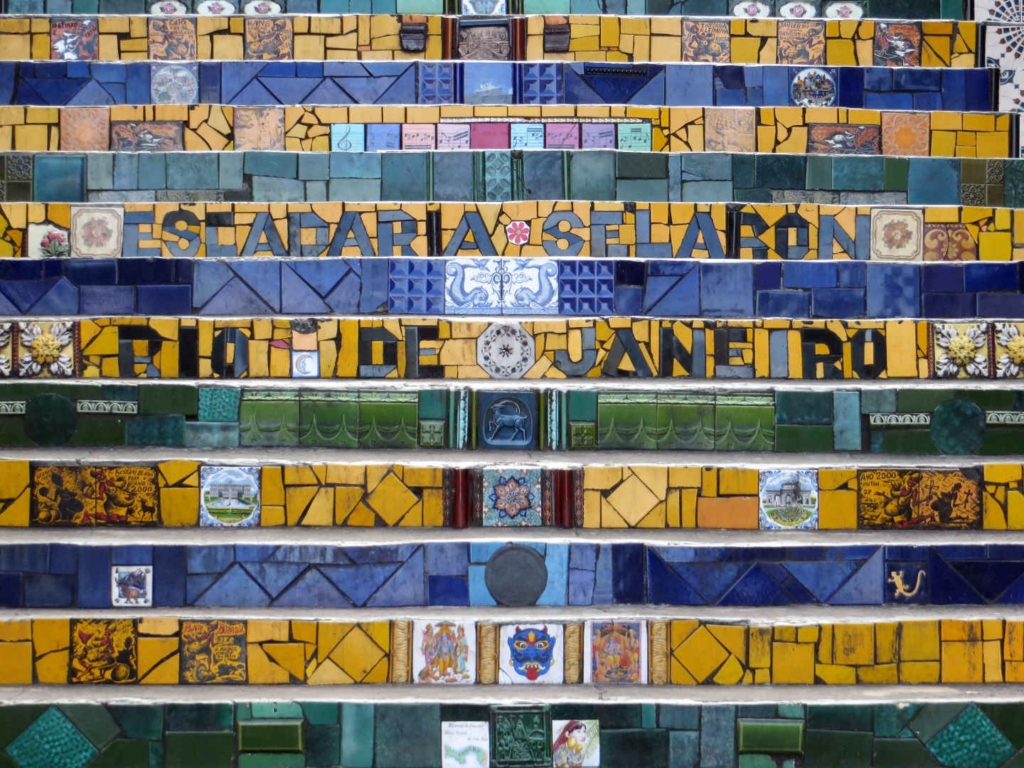

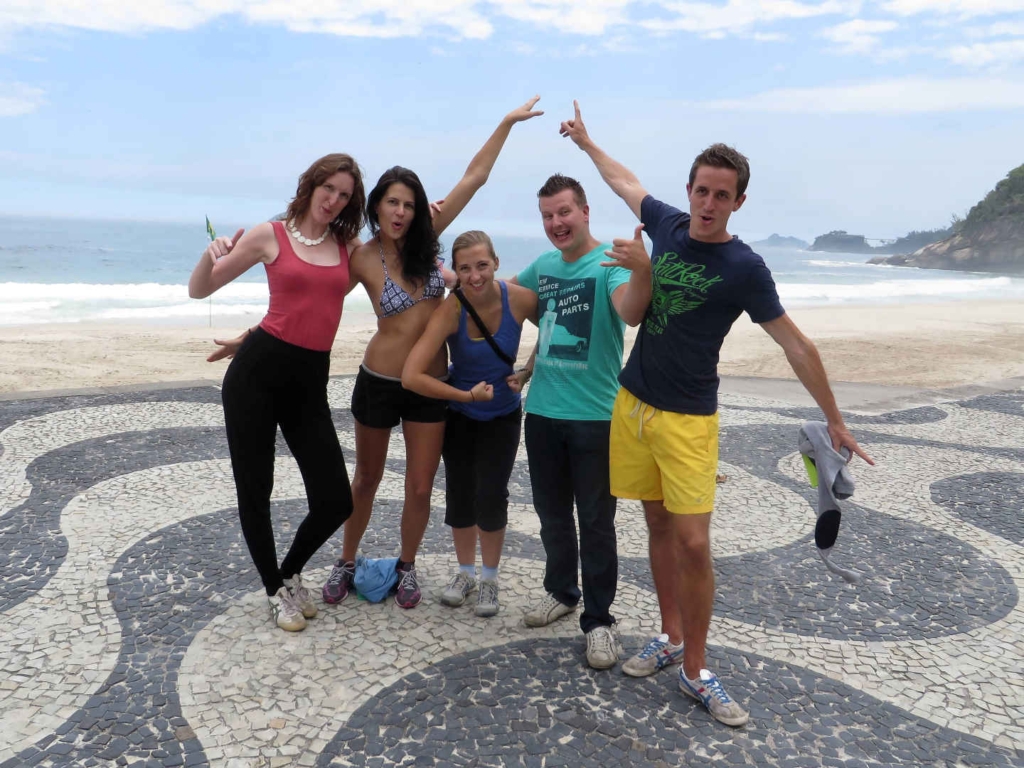

I was in Rio during World Cup 2014. What a difference a major sporting event makes here! Prior to arriving, I kept hearing all the major warnings about Rio (e.g it’s unsafe, you’ll be robbed/mugged, etc.) There was plenty of tourist police everywhere in the city that I felt a bit more secure about my surroundings. It will be really interesting to see how well Rio Summer Olympics 2016 will turn out, though.
Hi Ray, thanks for your message. Wow, Rio during the World Cup must have been incredible! The police were very helpful when I was there too, letting me know which places to avoid. I imagine there’s a huge police presence there right now! Hopefully everyone will stay safe during the Olympics.